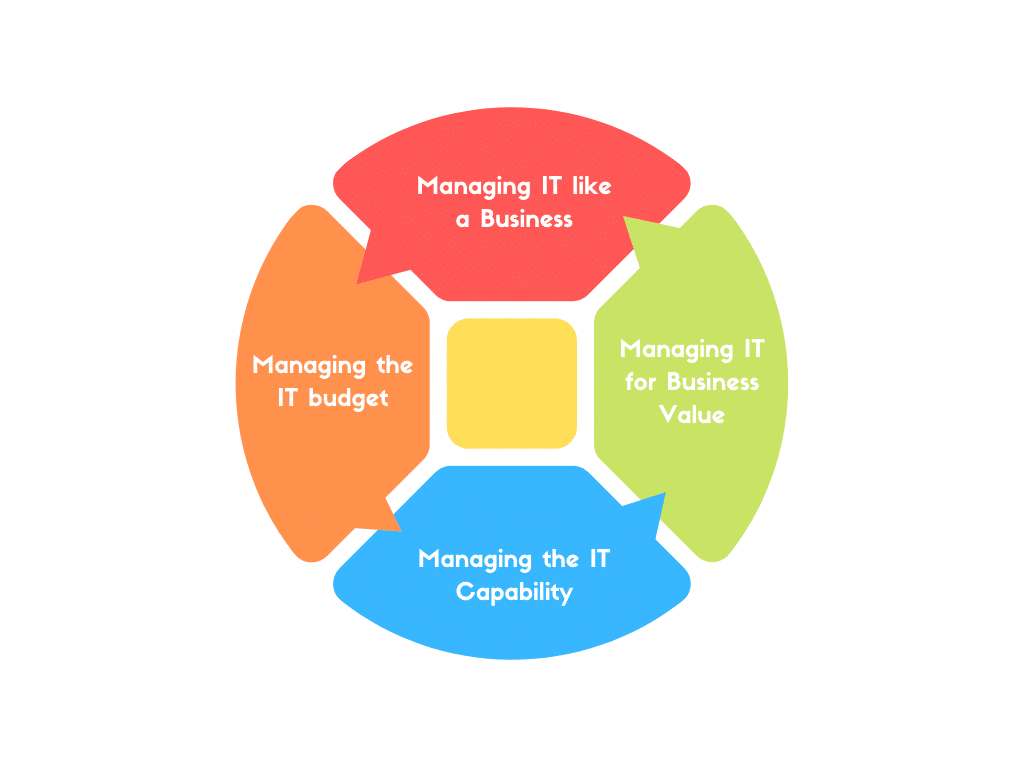It is no longer enough (if it ever was) for the IT department in an organisation to provide one-off IT services and solutions. The days when the IT function in an organisation was accorded a large budget, with no need to contribute to the profitability of the organisation, are long-gone. IT has to move from being a cost centre, simply supplying useful technology, and devouring a budget provided by other functions within the organisation while so doing, to a value centre, where it actively contributes towards the well-being of the entire enterprise.
Above all, the IT function has to be flexible and innovative; able to respond to a constantly changing business environment. It is the CIO who is ultimately responsible for optimising the gains from any investment in IT. It is the CIO who has to decide on the business direction the IT function is to take. So what are the capabilities every CIO needs to exhibit to successfully manage the IT function in an organisation?
‘Capability’ is simply the power or ability to do something. It refers to the extent of someone’s (or something’s) ability, such as achieving pre-determined objectives. Within an organisation, capability refers to the ability to complete a set of co-ordinated tasks by utilising the organisation’s resources, to achieve a particular end result.
Organisations need to be flexible and dynamic in order to realign their resources to respond to changes in their operating environment. They need to innovate and reconfigure their resources through growing their income base to embrace and exploit new, unforeseen, opportunities; and to address unforeseen challenges and rapidly changing circumstances. If organisations exercise these capabilities consistently, their organisational learning will be intensified and they will become more efficient and effective.
The role of the CIO within an organisation is therefore multi-faceted, and a successful CIO needs to exhibit capabilities which include searching for, exploring, acquiring, assimilating and applying knowledge about resources to exploit opportunities. The CIO needs to be able to mobilise, integrate, reconfigure, co-ordinate and deploy IT-based resources to fulfil organisational objectives. IT resources may be either tangible (financial, infrastructural, human) or intangible (software, data, branding).
It is the role of the CIO to align the IT function and posture with the overall strategy of the organisation and the business environment in which it operates. There are four key strategic areas which successful CIOs need to address. These are illustrated in the figure below:
-
Manage IT like a business: The CIO's job is to plot the direction for overall IT capability. The contribution of technology to the organisation needs to be optimised to provide solutions for customers and business problems. This is best achieved by managing the IT function following professional business practices and processes.
Business processes are the sequences of actions that organisations implement to accomplish specific tasks by exploiting resources and developing routines and activities. If business processes are to be executed effectively, both individual employees and groups need to be competent. It is the role of the CIO to assist individual employees and groups to develop competence in specific ways of working.
Examples: Leadership, business planning, strategic planning, sourcing, risk management, etc.
-
Manage the IT budget: The budget needs to be managed according to the strategic direction of the organisation so that organisational activities and programmes can be implemented. This can be a challenging exercise. Problems include unplanned escalation of costs, the cost of maintaining legacy systems, and the reluctance of management to invest strategically in new technologies. The CIO needs to develop a sustainable economic funding model for IT services and solutions.
Examples: Budget management, funding & financing, portfolio planning and prioritisation, etc.
-
Manage the IT capability: This is, in essence, the raison d’etre of the IT function. The CIO has to drive innovation and continual business improvement so that existing IT systems can be maintained, and new ones developed.
Examples: Project management, development, testing, relationship management, information security, capability assessments, etc.
Manage IT for business value: The IT function has to move from being a cost-centre to being value-centered. All activities and programmes need to deliver value. Any investment in IT must show overall business benefits and must generate business value and innovation throughout the organisation, not only in technology projects. It is the role of the CIO to provide the rationale for investing in IT, from which measurable benefits must be seen to accrue.
Examples
None of these management strategies should operate in isolation. As is illustrated in the diagram, they should operate in a continuous feedback loop; and their overall success is in large part determined by the capabilities of the CIO to co-ordinate, innovate, and respond to challenges and a changing environment.

For more on the capability framework we outlined look at the developed by the folks at the .